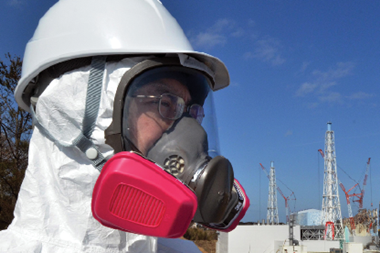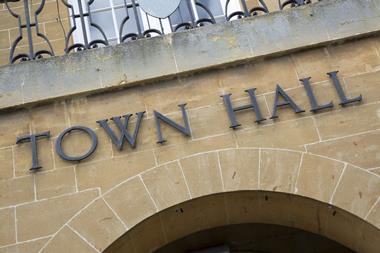In the aftermath of the World Trade Center attack, there seemed every reason to expect a significant and lasting upturn in property treaty rates. Following losses of an unexpected magnitude, there was general agreement that too much cover had been offered for too little premium and that a major correction was required.
In the wake of the dot.com slump, stock prices had become, and have remained, depressed, restricting (re)insurers' ability to improve on lacklustre underwriting results through strong investment returns. Global economic slowdown had set in and, with the accounting scandals at Enron and Worldcom, the international financial system itself seemed on the verge of a full blown crisis of confidence.
Meanwhile, the insurance industry's reserving practices for asbestos, toxic mould and other long tail liabilities came under the spotlight, as projected levels of litigation and damages claims were revised upwards.
Insurers and reinsurers were incurring mounting losses, while the value of their assets plummeted. For established insurance and reinsurance carriers, there seemed little call for optimism. Indeed the term 'the perfect storm' was widely used at the time to describe this combination of circumstances.
What happened?
Despite all this, from a property treaty point of view, at least, you would have to wonder what exactly became of the predicted hard market.
Sure, there were rate increases and terms and conditions were tightened up - but no hard market in the generally understood sense.
Rate increases at the 1 January 2002 renewals were considerably more modest than many had expected, particularly in the US where the major loss events of 2001 had taken place. Two years on, property treaty rates are coming under pressure in almost every region. There is still plenty of good business to be written, but the expected hard market simply failed to materialise in any sustainable form.
Simply, the main issue is that there is too much capacity in the market.
It is estimated that the insurance industry lost between $30 billion and $40 billion as a result of the World Trade Center loss. Losses of this magnitude might have been expected to precipitate a significant and durable hardening right across the market.
New capital
However, following a pattern similar to that seen in the wake of Hurricane Andrew in 1992, new capital providers stepped in quickly after 9/11, anticipating sharply rising rates. Much of this very significant new capital was deployed to support new property treaty underwriters in Bermuda and elsewhere.
Compared with other classes of business, property treaty underwriting operations are relatively easy to get up and running in the short term - a key objective for capital providers eager to take immediate advantage of a positive rating environment.
Nevertheless, the events of 2001 had underlined the fact that property treaty business could result in major losses. This lesson was not entirely lost on reinsurers - new entrants as well as established carriers. There was a new focus on underwriting discipline, controls and modelling. Rates rose and terms and conditions became more stringent.
New entrants to the market did, indeed, benefit from rate rises in the wake of World Trade Center. It quickly became clear, however, that there was an ample supply of capital available to cedants. This effectively prevented the establishment of a true hard market.
New entrants committed huge amounts of capital to the pursuit of ambitious business plans. Initially, during 2002, this capital was used as intended - to write property treaty business at healthy rates, generating a strong return on investment in a year largely free of major losses. However, less than three years on from World Trade Center there are already growing signs of competition.
Pricing spread
An over abundance of capacity tends to create inconsistencies in terms of market pricing and coverage issues. In a hard market, the pricing range is usually narrow. Now, however, it is increasingly broad, reflecting widely varying perceptions as to the appropriate price for any given property treaty reinsurance risk. This suggests that at least some reinsurance carriers have begun to compete on price.
On a certain level, such behaviour is entirely comprehensible. Investors, particularly those without extensive previous experience of the (re)insurance market are naturally keen to see their capital put to work. Reinsurers might, therefore, experience a certain amount of pressure to maintain or increase market share in order to meet the expectations of their business plans.
Carriers with more experienced or sophisticated capital providers, however, will be happier for their underwriters to take a firm line and resist any temptation to write business at rates they consider inadequate, i.e. they will let their underwriters 'sit on their hands' and not expect them to write for cash flow.
Ideally, (re)insurers should have the flexibility to re-deploy underwriting resources to pursue whichever types of business are currently most attractive, but unfortunately such operations tend to be the exception rather than the rule.
Without the support of sophisticated and sympathetic capital providers, many believe they have little real choice but to continue writing a particular class of business simply to stay in the game. To ensure a consistent return on equity over the long term, reinsurance underwriters must have the confidence to decline business when adequate rates cannot be achieved.
Pressures
Local offices provide a good illustration of the pressures at work. A reinsurer may have invested time, money and credibility in establishing a high-profile office in a particular part of the world. The company will have employed staff and gone through the painstaking process of establishing and building up a book of business. When competition forces prices down, it is not necessarily such a simple matter to cease underwriting in that territory: initially, at least, there could be a strong temptation to compromise on pricing in the hope of better times to come. In an era where commitment to the market is a key selling point, underwriters may fear alienating potential clients by dropping in and out of a market.
Barely two and a half years on from World Trade Centre, property treaty underwriters are struggling to maintain rating levels, and there have been clear indications during the year that a general downturn in rates has begun. Of course, this does not necessarily mean that prices will be inadequate - though, in our view, they have already become so in certain territories - but simply that they will be relatively less attractive.
A company's ability to write profitably in such a market obviously requires greater underwriting skill and experience, but there will always be opportunities for those organisations that can bring these attributes to bear.
To all intents and purposes, this is now a buyer's, rather than a seller's, market.
In a hard market, as the term is generally understood, you would expect sellers to dictate terms. But reinsurance is subject to the same basic laws of supply and demand as any other type of goods or services. Currently, there is oversupply and this is forcing prices down and creating conditions that allow brokers to place layers as large as $650m in as little as two or three days.
The property treaty market has missed a golden opportunity to put into practice the discipline to which it aspired during the soft market of the 1990s. The blame for this should not, perhaps, be laid solely at the underwriters' door.
Unless they have the informed support of sophisticated and understanding capital providers, many underwriters will continue to feel obliged to write under-priced business in order to meet growth and revenue targets that take insufficient account of actual market conditions. This benefits no one in the long term.
The interests of all parties - not least the reinsurance buyers - are best served by a market in which cover is consistently priced at a fair, realistic and sustainable level.
Laurence Tyler is senior vice president and property account manager, and Simon Norton, vice president and underwriter: property treaty, Alea London.
www.aleagroup.com

















